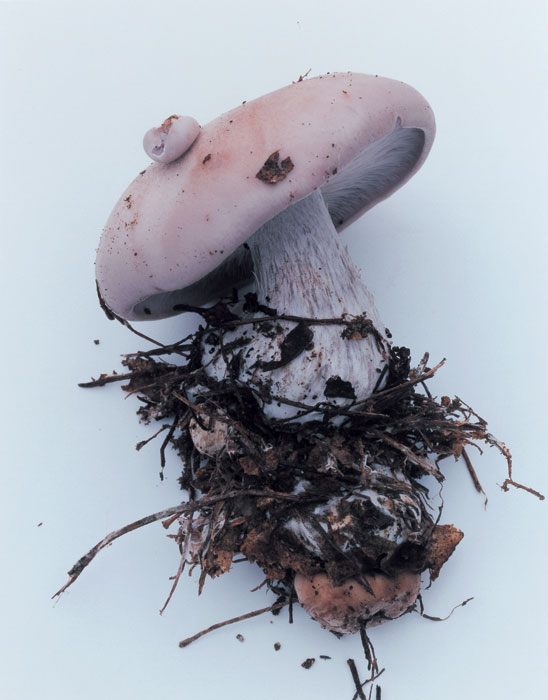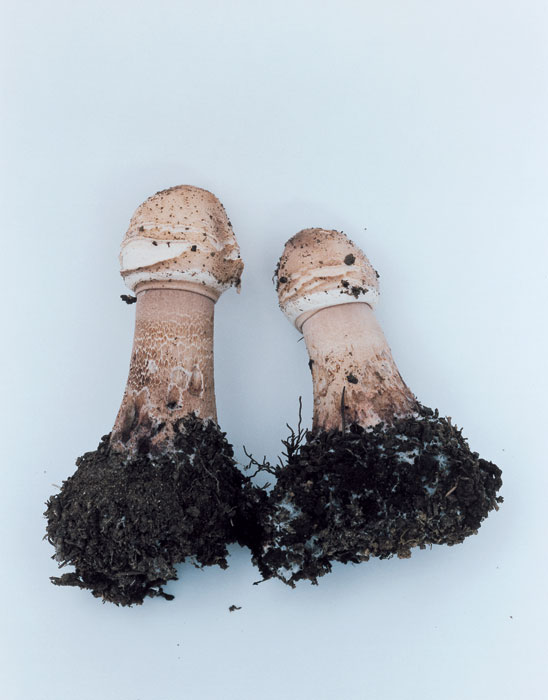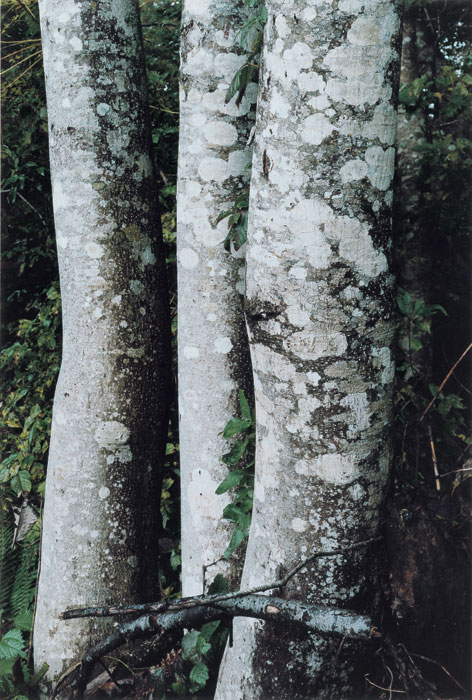Exhibition Review
Some thoughts on Mushrooms from the forest 2011
By Tristan Hooper

image courtesy of blind gallery
During the autumn of 2011, following the catastrophic events of the Great East Japan Earthquake, photographer Takashi Homma explored the forests of Fukushima prefecture. In the midst of the nuclear crisis Homma selected, picked and photographed various species of mushroom that were found to exhibit high levels of radiation and were as a result classified as unsafe by the government.
An exhibition of the photographs entitled Mushrooms from the forest 2011 was hosted by blind gallery between December 17th and February 19th, 2012. A book by the same name, containing further images was produced in conjunction with the exhibit. The newly opened gallery is located in the Yoyogi district of Tokyo, just a few minutes' walk from the JR station. The venue itself is the definition of bare bones simplicity. Fashioned from what appears to be a recycled shipping container, the narrow yet surprisingly accommodating space places the focus directly on the work displayed and leaves little room for anything else.
The images are framed simply and displayed without captions. The individual mushroom studies, which account for the majority of the exhibition, are juxtaposed with images of the wild and unpopulated woodland environment from which they originated. The various species of mushroom are photographed against a white background; soil and other debris are clearly visible clinging to roots and stems. The different types of fungi are incredibly distinctive. After viewing one or two they begin to resemble portraits. Each mushroom is personified by its individual shape, size and features. Some species appear in pairs, others in larger groups still. These organic subjects look especially foreign photographed in such a sterile environment leading one to make associations with medical study or post mortem examination.

image courtesy of blind gallery

image courtesy of blind gallery
In modern culture and especially ancient civilisation the image of the mushroom is hugely symbolic for a number of reasons. This varied iconography could instigate a number of different interpretations in terms of understanding Homma's work. It is interesting to note that fungi have long been recipient to a range of conflicting emotional reactions. On one hand they are the fruits of nature, spawned from the ground and picked by many for food but conversely they are often regarded as a sinister, potentially fatal and toxic species.
To some the phallic shape of the mushroom represents fertility, however when viewing Homma's photographs perhaps the most obvious association can be drawn from the fact that the typical mushroom shape is ubiquitous with the cloud form produced by an atomic explosion. Referred to simply as a 'mushroom cloud', this image has been and continues to be the subject of endless recontextualization and can be seen appropriated within advertising, animation, protest imagery and political propaganda. Indeed, this atomic association is in keeping with the works somewhat nuclear premise. The atomic explosion is the result of man's destructive application of nuclear power whilst the contamination of Homma's mushrooms is partly a consequence of man's utilisation of nuclear power for energy.

(image courtesy of blind gallery)
Homma picked the mushrooms and photographed them on site within the forest using a portable studio. The strategy of extracting the specimens from their natural habitat and relocating them inside a white, clinical environment seems to reassert and punctuate the concept of man's potential influence and power over nature.
Mushrooms from the forest is another example of a relatively recent shift in Takashi Homma's practice. His previous work is notable in its depiction of modern Tokyo suburbia and its young inhabitants. Lately however his focus has been more directed toward nature.
In comparison to the great glut of imagery produced in response to the tragic disaster of 2011 and the subsequent nuclear crisis, Homma's work is muted and quietly suggestive. When studying the mushroom photographs it is easy to be drawn in by the intricacy and strange beauty of nature's design but if one considers these images in terms of their contextual significance it becomes more apparent that this is a body of work that is loaded with implication.
Review by Tristan Hooper
